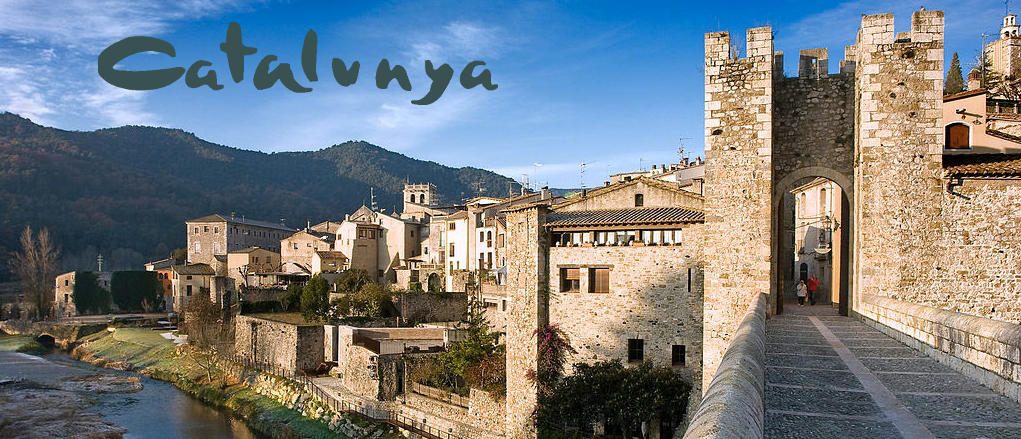As always, our trip to Spain starts in our favorite bar – La Vinya del Senyor (God’s vineyard), opposite the beautiful and iconic Catalan Gothic Basílica de Santa María del Mar in old Barcelona.

In La Vinya del Senyor with Mayra and Raul who told us about the Costa Brava trail
La Farga de Bebié to Ripoll
El Camí Oliba (Route of Abbot Oliba) starts in Montserrat near Barcelona and terminates 200km north at the French border. Rich in Romanesque art and architecture, preserving Catalan language, traditions and culture it traverses the heart of Catalunya. The Camino (de Santiago) Ripollès also follows this Route.
We join the Route two hours by train north of Barcelona at the abandoned textile factory of La Farga de Bebié. The well-marked trail is mostly wide and easy walking but in places steeply up hill, barely a goat track. It’s rugged, remote, tranquil and beautiful: 3½ hours.

The abandoned textile factory of La Farga de Bebié

From La Farga de Bebié to Ripoll
In Ripoll there’s the famous Romanesque Monastery, Santa Maria de Ripoll founded by the Wilfred the Hairy in 879.

Ripoll Monastery, founded 879

The Monastery portal is a unique example of Catalan Romanesque sculpture
Ripoll to Sant Joan de les Abadesses
The Via Verde (rail trail) Iron and Coal Route runs the 10km from Ripoll to Sant Joan de les Abadesses making a pleasant 3 hour stroll; River Ter on one side, forest on the other.

A local man makes a Sunday walk along the Iron and Coal route

Some reminders of the days of the trains

First glimpse of Sant Joan de les Abadesses

We arrive via the 12th century bridge across the River Ter

Monastery of Sant Joan de les Abadesses founded 885

Main Plaza in Sant Joan de les Abadesses

Romanesque Sant Pol, built 1150 partly destroyed in 1936
Sant Pau de Segúries
We arrived in Sant Joan de les Abadesses to find today was the annual fair day at the nearby village of Sant Pau de Segúries. There would be gigantes y cabezudos (“Giants and Big-Heads”) and sardanes (traditional Catalan dancing) today so we took a taxi there.

Children with “Big-Heads” follow the giant through the streets

Sardana (traditional Catalan dancing) in the main plaza
Sant Joan de les Abadesses to Camprodon
With rain forecast we made an early start on the 18.5km (4 hours) day from Sant Joan de les Abadesses. Described as “a tranquil walk through woodlands, meadows and crops, and farmhouses” it’s a slight climb to Camprodon (990m) in the Alt Ripollès, the High Lands of Ripollès.
Stopping for a coffee in Sant Pau de Segúries we spotted a sign “Via Romana”. Roman Road! And only a 30 minute diversion.

Walking on the Via Romana (Roman Road)

Not much chance of getting lost today

Camprodon’s iconic Pont Nou (New Bridge), 12th century

Sant Pere Monastery – unusual tower: octoganal base and a square top

Camprodon lies in a narrow valley, the houses line the stream

This shop has been making these same meats since 1870
